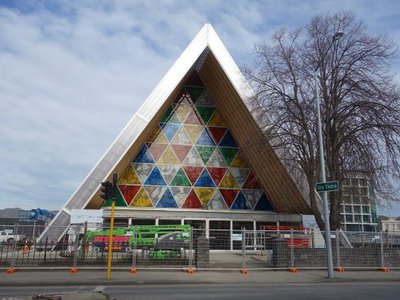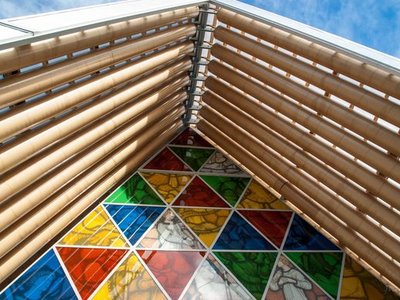Cardboard Cathedral


In February 2011, Christchurch suffered
a devastating earthquake, which destroyed large parts of the city and led to the tower of the city’s historic Neo-Gothic cathedral collapsing. Further aftershocks
destroyed its iconic stained glass
, making the church unusable and leaving parishioners without a place to worship.
A few weeks after the earthquake, one of the cathedral’s staff members read an article about a Japanese “emergency architect” named Shigeru Ban. Following the earthquake in Kobe, Japan,
Ban designed a cardboard church
to replace one that had been destroyed. Ban visited Christchurch and offered to create a similar cardboard cathedral in New Zealand. Two years later it became a reality.
Made of thick cardboard tubes, local wood, and steel, with a floating concrete floor, the Transitional Cathedral serves as the church’s home until funds can be raised to
fully rebuild the original
. Ban donated his architectural expertise, and the use of simple building materials enabled the construction to be completed much faster and more affordably than a traditional church. It’s also built to 130 percent of the current New Zealand earthquake code, making it very safe. At full capacity, it can seat nearly 700 people.